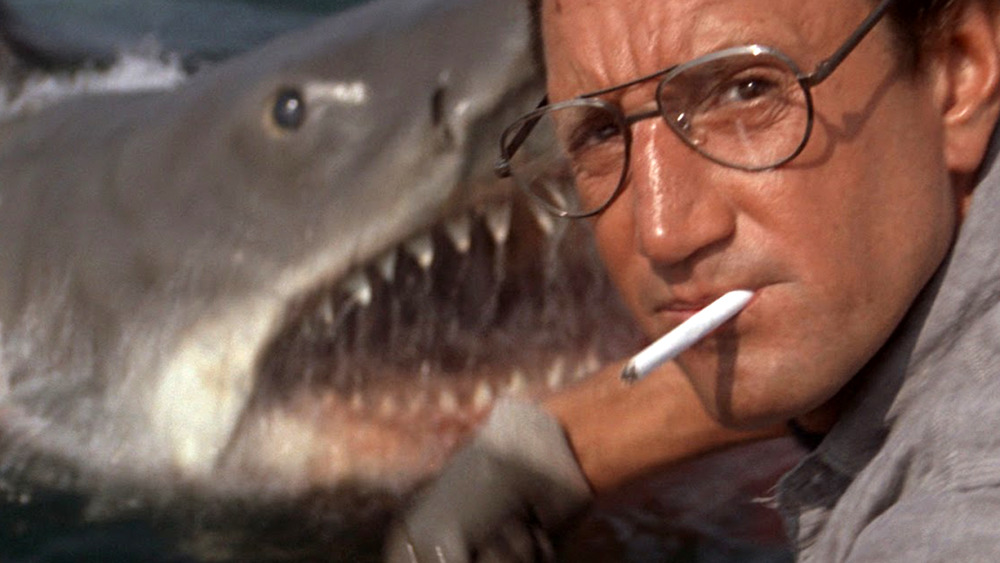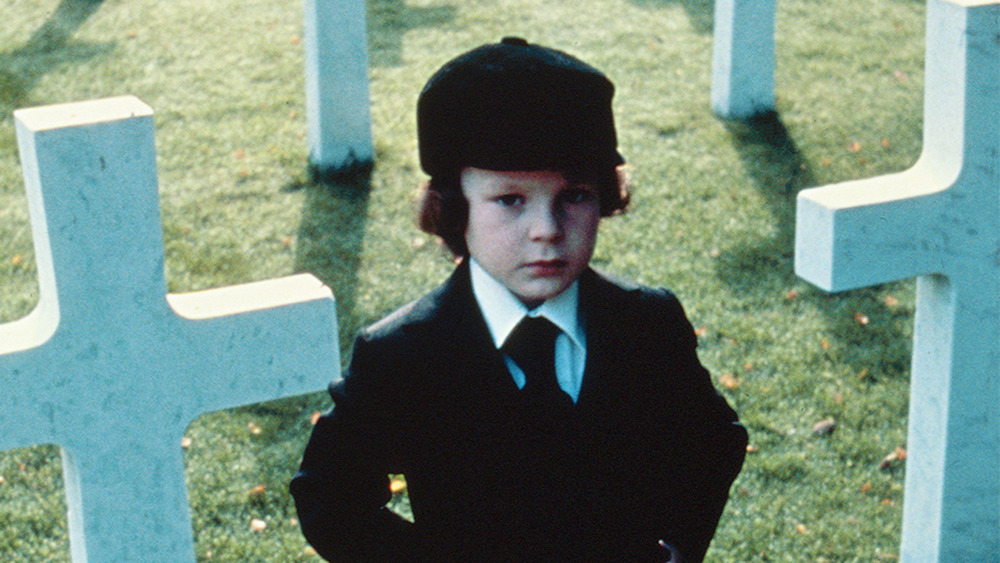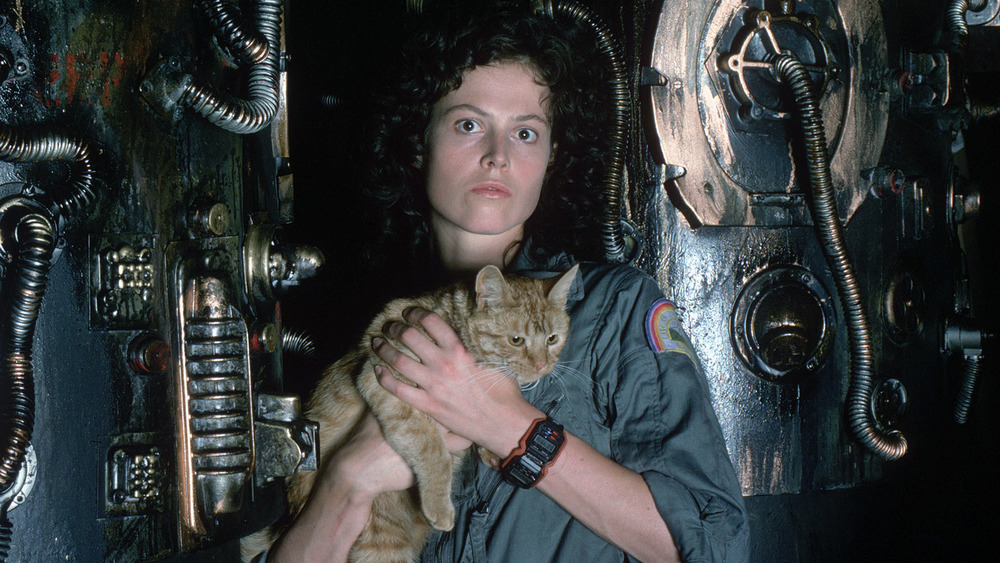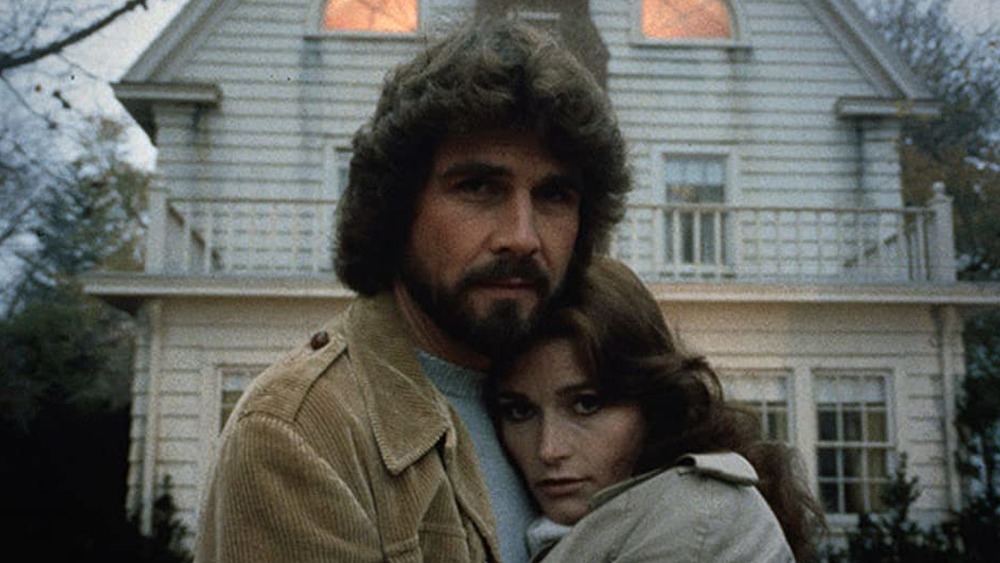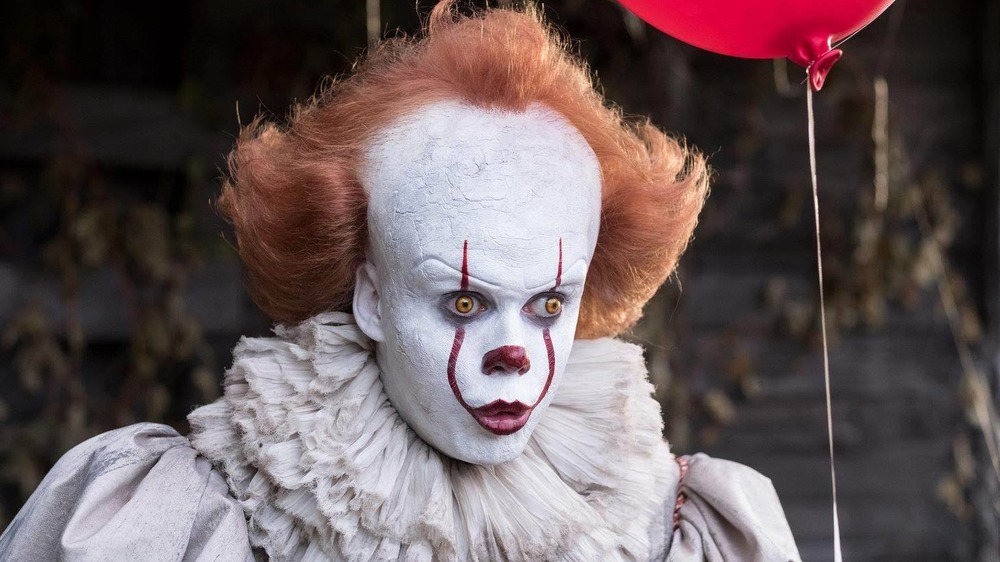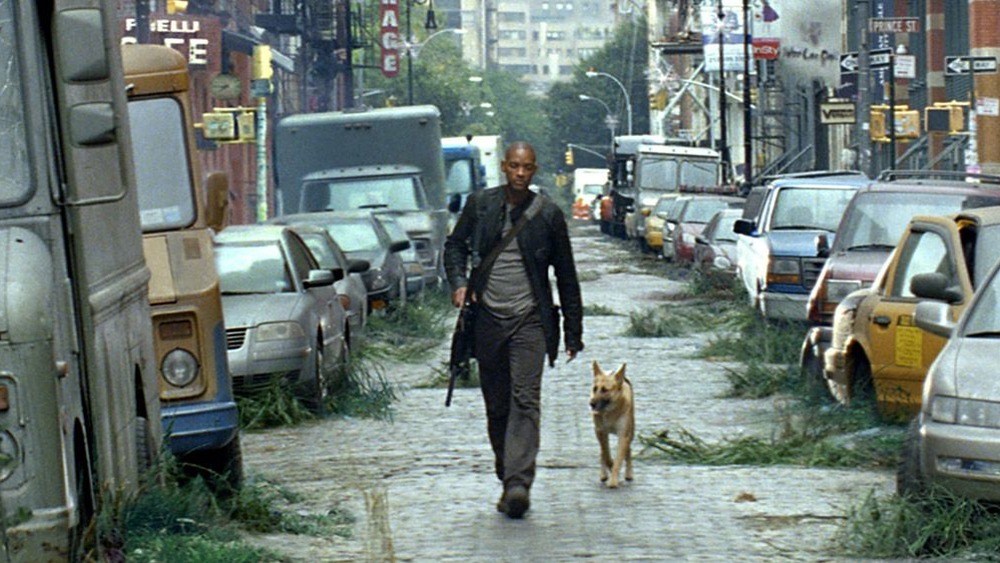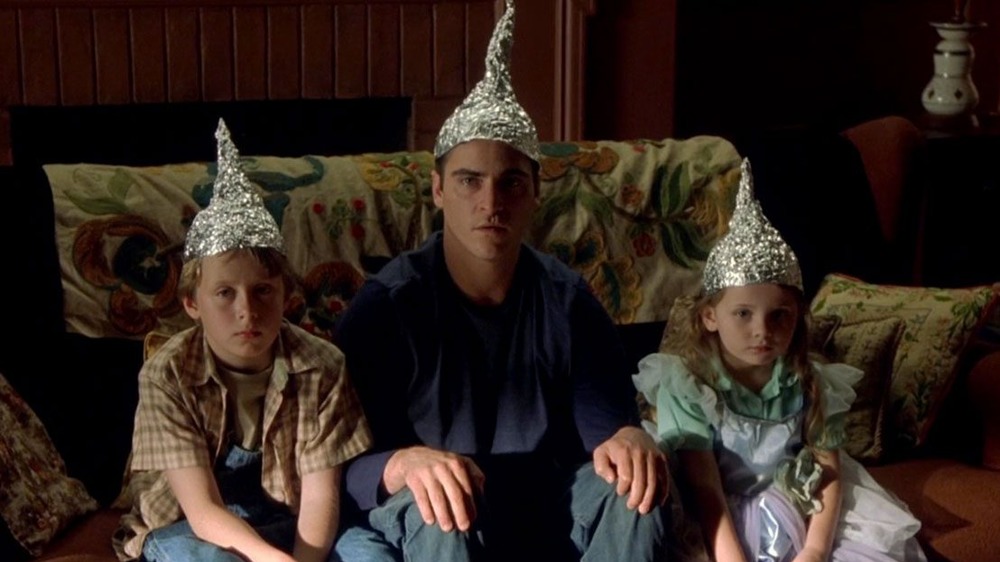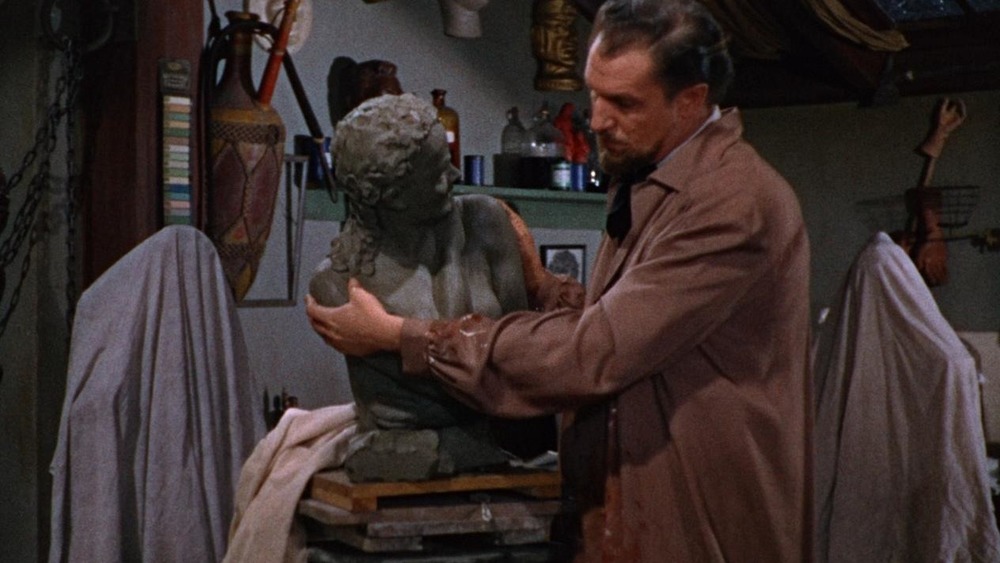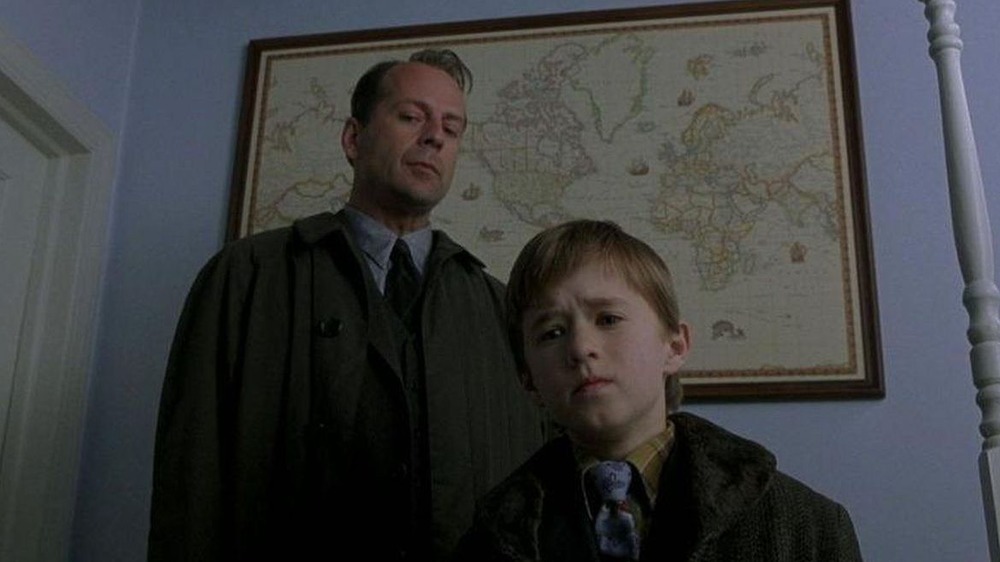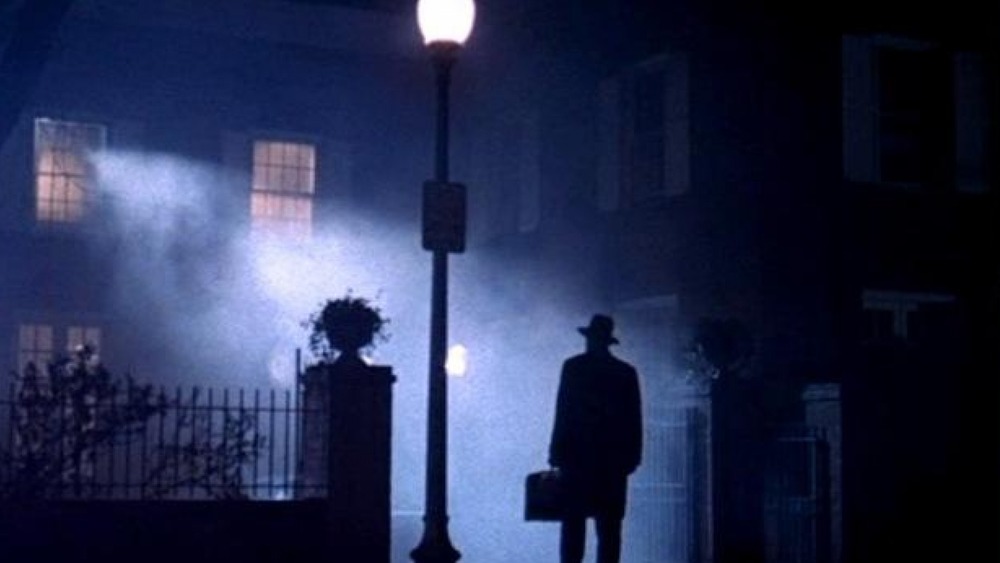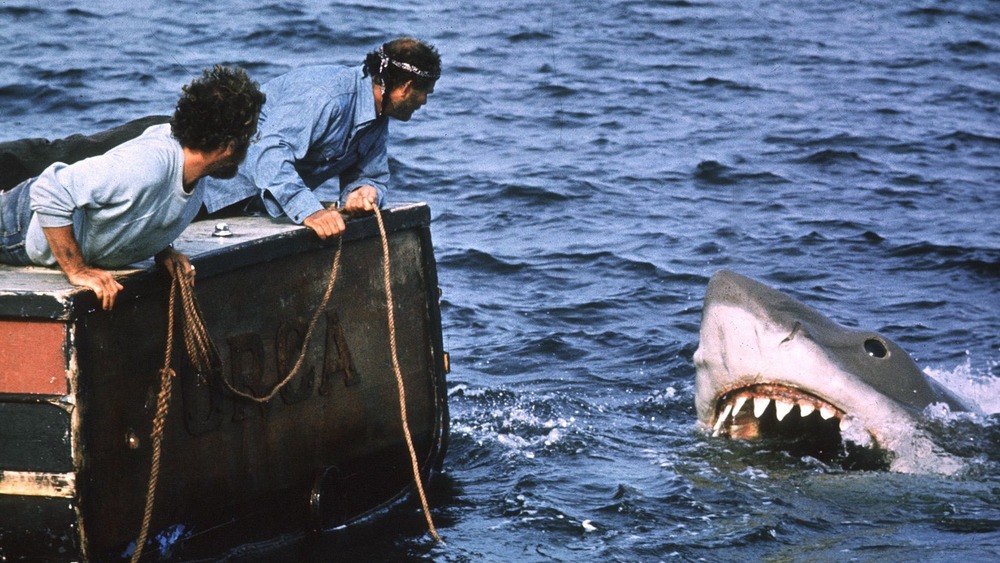The Highest-Grossing Horror Movies Of All Time
In 1896, legendary French cinema pioneer George Méliès premiered his film The House of the Devil. It ran for 10 minutes and was not as grand of a spectacle as later Méliès movies like A Trip to the Moon. But by being the first-ever horror film, it did establish a whole new genre of cinematic expression. At the dawn of cinema as an art form, horror movies were right there, ready to frighten and excite audiences. In the years since The House of the Devil, horror has only become more and more prominent on the broader film scene. Nowadays, it's a massive industry unto itself, with titles like Get Out and It scoring box office grosses that rank among the biggest of all titles (horror or otherwise) in their respective years of release.
The consistently lucrative nature of horror cinema is especially apparent when looking at the highest-grossing horror movies of all time. The most successful horror movies aren't just from one era of film history, but span multiple decades. It's a testament to how, no matter if it's 1896 or 2020, moviegoers love to be scared, especially by movies as frightening as these.
One note before going ahead: all figures in this article are domestic box office tallies that have been adjusted for inflation.
Damien horrified hordes of moviegoers with The Omen (1976)
In the wake of The Exorcist's record-breaking box office success, a swarm of knock-offs emerged trying to capitalize on its mixture of theological scares and demonic children. The most successful of these, by far, was The Omen, a 1976 movie that managed to snag To Kill a Mockingbird leading man Gregory Peck to headline its supernatural horror escapades. While it couldn't match the box office intake of The Exorcist (what could?), The Omen still managed to be a lucrative enterprise on its own terms.
Grossing $268 million domestically (or just under $61 million in 1976 dollars), The Omen didn't just attract audiences because of residual goodwill for The Exorcist. Distinctive marketing materials and a prime late-June release date that allowed it to take advantage of the 4th of July weekend frame furthered bolstered the box office run of The Omen. Furthermore, the positive reviews and presence of Gregory Peck made The Omen function as much as an adult drama as it did a horror movie for teenage viewers. It may have started out as a way to capitalize on The Exorcist, but The Omen's box office performance ensured it would carve out its own identity in the history of horror cinema. Just look at how The Omen spawned its own franchise, comprised of three sequels, a 2006 remake and a TV series.
An iconic horror franchise was born with Alien
20th Century Fox executives were famously hesitant to greenlight the original Alien. An original R-rated sci-fi film hailing from relative newbies to the Hollywood scene, it wasn't exactly a recipe for immediate success. However, once Star Wars took off, Alien was the only sci-fi film waiting in the wings at 20th Century Fox. Its very existence wasn't a sure thing, but Alien's eventual box office gross likely made everyone at Fox grateful that they gave the picture the go-ahead.
Alien took off with a $298.6 million domestic run, an impressive sum for a movie that didn't have any famous source material to draw from and a cast of then-unknowns. Opening on the same Memorial Day weekend that Star Wars debuted on, Alien played steadily throughout the summer of 1979, proving — much like Star Wars – that sci-fi could have a far broader appeal than initially anticipated. In this case, Alien cemented that sci-fi horror aimed at grown-ups could have a place in the mainstream culture. While the studio was hesitant to produce the original Alien, there would be no such feelings about capitalizing on its success. A slew of sequels and prequels followed, while the franchise seems set to continue thanks to an upcoming FX series from Noah Hawley.
The Amityville Horror successfully merged reality with horror
Based on a 1977 book of the same name, The Amityville Horror was possibly the first major horror movie — but not the last — purported to be based on a true story. Both the book and the film chronicled the events that befell a Long Island, New York family in late 1975 after they moved into a home where a troubled young man had murdered his entire family.
In the years since its release, the authenticity of these real events has been widely questioned. Not debatable, though, is that audiences ate up The Amityville Horror in its 1979 theatrical release. Taking in $322.6 million, it was, per ScreamFest, the second-biggest movie of 1979, only behind eventual Best Picture winner Kramer vs. Kramer. Its box office run closed out the financial hot streak horror movies had been on during the 1970s. Thanks to titles like The Omen, The Exorcist and The Amityville Horror, horror movies had reached new financial highs during that decade. Additionally, The Amityville Horror laid the groundwork for future horror movies like The Conjuring to find success in tying their scares into reality.
It successfully brought Pennywise to the big screen
Few figures in American horror are as iconic as Pennywise, the being that takes on the form of a clown in Stephen King's seminal novel It. "Pennywise isn't so far removed from regular clowns," Sophie Gilbert of The Atlantic mused about the character's popularity. "[Clowns have] made a living for decades by mimicking the thing that almost everyone fears — being seen as ridiculous." Seeing such a widely-fear character on the big screen for the first time (following the Tim Curry version from the 1990 ABC mini-series) was an event for horror fans akin to superhero fans seeing the first live-action theatrical incarnations of Spider-Man or Wonder Woman.
So it was no surprise that It proved to be a smash hit. What was surprising was just how big it turned out to be. It's $342 million haul was on par with the box office take of a Marvel Cinematic Universe movie, not the box office grosses seen by an R-rated horror film. The popularity of Pennywise and King's novel certainly helped things out, while its international box office muscle was boosted by savvy release date scheduling that ensured it opened over lucrative holidays in territories like Brazil. Furthermore, It never opened in China, a territory usually essential for any modern-day worldwide box office blockbusters. But when you've got a character as iconic as Pennywise, a movie like It is bound to break conventional rules.
Will Smith successfully leaped into horror cinema with I Am Legend
Between Independence Day, I, Robot and the two Men in Black movies, Will Smith had made his expertise at the sci-fi genre well-known by 2007. But with I Am Legend, Smith tried his hand at horror with this story about one man and his dog trying to survive a post-apocalyptic version of New York City inhabited by nocturnal vampires. Though it had more jump scares than prior Smith blockbusters, I Am Legend had the kind of big box office Smith generated reliably during the 2000s.
I Am Legend managed to gross $344.1 million, ahead of the domestic hauls of then-recent Smith vehicles like Hitch and Men in Black II. It wasn't rocket science how I Am Legend became one of the rare modern horror movies to achieve such massive box office success. Marketing itself as a Will Smith action movie first, Smith's widespread appeal across all ethnicities and genders made it the kind of film that could appeal to everybody and not just horror movie aficionados. Releasing it in December 2007, which didn't have much in the way of competition in terms of PG-13 tentpoles, didn't hurt either. After dominating the sci-fi genre for so long, I Am Legend saw Smith smoothly bring his box office prowess to the world of horror cinema.
Signs took aliens and family drama to the bank
Like the best M. Night Shyamalan movies, Signs is both a creepy film and a grounded human drama. In this case, the creepiness stemmed from one family gradually realizing that extra-terrestrials were terrorizing their home. Meanwhile, the human element came from the family's father (Mel Gibson) being a former pastor who gave up on his faith following the death of his wife. Mixing eerie genre movie elements with relatable drama, plus the combined star power at the time of Shyamalan and Gibson, didn't just make Signs a quintessential movie from the director of The Sixth Sense. It also helped to turn Signs into a box office sensation.
Signs kicked off its domestic run in August 2002 and got off to a gigantic start. The Guardian observed that its launch was so successful that it scored opening weekend records for both Shyamalan and Gibson. Largely positive word-of-mouth from critics and audiences alike ensured that Signs continued to play well for weeks to come rather than just flaming out after one lucrative weekend. On top of all that, Signs achieved this level of success in August, a month that is traditionally not blockbuster-friendly. Adjusted for inflation, Signs has managed to take in $367.6 million domestically, making it one of the biggest horror movies in history. Looks like that trademark Shyamalan mixture of the relatable and terrifying worked its magic again for Signs.
Audiences got stuck on House of Wax
In 2009, Avatar became a box office juggernaut thanks to its novel use of 3D technology. Though you wouldn't expect there to be many similarities between a James Cameron-helmed blockbuster and a 1950s horror B-movie, Avatar and House of Wax are more kindred spirits than you'd expect. In its 1953 theatrical run, House of Wax also saw its box office grosses massively boosted thanks to its employment of 3D technology.
Released in 1953, House of Wax was a landmark movie, being the first major studio release produced in 3D. The novelty of 3D, as well as clever promotional events, helped to make House of Wax an event people just had to see. This was reflected in how House of Wax managed to top the box office for five weeks. Eventually, it amassed a domestic box office run of $473.4 million (or just under $24 million in 1953 dollars, which was still impressive). Such an enormous box office sum didn't just spur on further titles made in the 3D format, it also revived the horror genre in mainstream American films. As a cherry on top, it also helped launch Vincent Price as a go-to figure in horror titles. With all these accomplishments to its name, this cheaply-made motion picture became an important title in the history of horror films.
The Sixth Sense exceeded expectations in its record-breaking release
In Disney's slate of 1999 movies, there were a handful of releases that were expected to do well, such as Tarzan, Toy Story 2 or the Pretty Woman reunion Runaway Bride. As for the August 1999 title The Sixth Sense, well, it may have been a Bruce Willis vehicle, but the likes of Hudson Hawk had shown he wasn't foolproof financially. Plus The Sixth Sense wasn't based on or inspired by famous source material and came from then-unknown director M. Night Shyamalan.
But instead, The Sixth Sense was, far and away, Disney's box office juggernaut for that year. Grossing $539.5 million, The Sixth Sense blew past all expectations. A 2019 Variety retrospective on the film's 20th anniversary observed that The Sixth Sense, on just a budget of $40 million, managed to beat all other releases, including fellow Disney titles, at the domestic box office in 1999. Only Star Wars: Episode I - The Phantom Menace outgrossed Shyamalan's breakthrough movie that year. The Sixth Sense managed to exceed all predictions thanks not just to that iconic twist ending but also a touching mother/son relationship that ensured there was enough heart to balance out the eerie tone. Whatever Disney expected of The Sixth Sense at the start of 1999, they likely did not anticipate this movie to be such a gigantic hit.
The Exorcist's box office run was heavenly
The Exorcist's box office success wasn't just driven by it being based on a best selling book or arguably the most frightening movie of all time. There was the extra allure of this being a movie that was outright dangerous. A movie that merged horror with explicitly religious themes, previously a largely taboo combo in American cinema, was a real novelty. Then there were rumors that The Exorcist was too extreme for an R rating. It also wasn't long before now-famous stories began floating around that viewers at early screenings were being so overwhelmed by its content that they fainted. All of these factors only heightened the sense that something was special was being brewed up with The Exorcist.
Starting off in a small limited release of just 30 locations only increased the demand audiences had for seeing The Exorcist. Eventually, all that demand resulted in The Exorcist scoring a $1.03 billion domestic box office haul. This made The Exorcist a hit on numerous levels. For one thing, it redefined the levels of success a horror movie could achieve at the box office. The Exorcist proved that the genre could generate big scares, big bucks and big critical acclaim in mainstream theaters across a wide swath of the country. This was a game-changer, driven by numerous factors, including the fact that the picture really was as scary as all the hype suggested.
Jaws took a historic bite out of the box office
Jaws wasn't just a box office hit by the standards of horror movies. It was a historic box office sensation for the film industry at large. Debuting in the summer of 1975, Jaws was released in a then-unique release pattern that saw theaters all across America getting the film at once. Previously, movies would traditionally undergo a gradual rollout that saw cities getting certain movies at different times. It was a bold gambit, as was entrusting this big-budget production to a then-new director who had directed just one previous feature. But all these risks paid off enormously.
The first of many Steven Spielberg blockbusters, Jaws excelled because of the traits that people would come to associate with the man's films: camerawork that placed you right into the action with the everymen protagonists; a John Williams score you can't get out of your head; and, of course, those moments of sheer terror that can still make chills run up the spines of modern moviegoers. Those are all the ingredients that led to Jaws scoring a $1.2 billion haul that totally redefined what it meant to be a box office hit. Beaches were never the same again after Jaws and neither were horror movies. Every subsequent entry in the genre lives in the shadow of this shark film.
